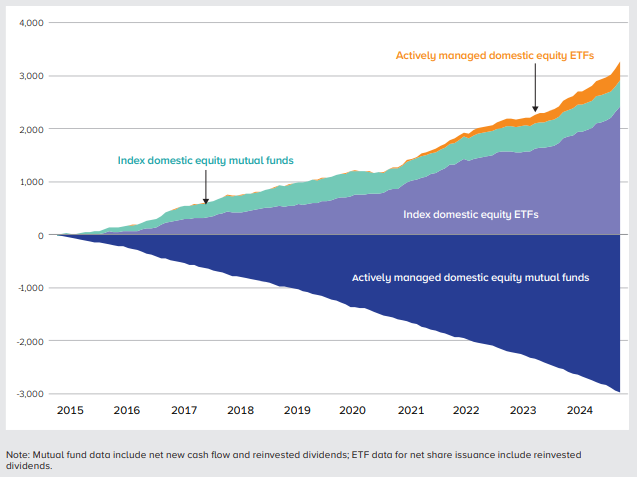3 Dividend-Paying Growth Stocks Set to Crush the Market This Year
Dividend-paying growth stocks are on solid footing and could outperform the rest of the market this year, since these stocks generally have underlying businesses that are solidly profitable, or at least profitable enough to pay regular dividends. Since investors are still quite fearful and the broader market outlook is murky, these types of stocks could […] The post 3 Dividend-Paying Growth Stocks Set to Crush the Market This Year appeared first on 24/7 Wall St..

Key Points
-
These growth stocks have expanding underlying businesses, and they are profitable enough to pay dividends.
-
The dividends paid are above 2% for all the stocks in this article, so it’s far more than the small, symbolic dividends most growth stocks pay.
-
On top of that, all of these growth stocks have solid upside potential and can outperform the broader market.
-
Are you ahead, or behind on retirement? SmartAsset’s free tool can match you with a financial advisor in minutes to help you answer that today. Each advisor has been carefully vetted, and must act in your best interests. Don’t waste another minute; get started by clicking here.(Sponsor)
Dividend-paying growth stocks are on solid footing and could outperform the rest of the market this year, since these stocks generally have underlying businesses that are solidly profitable, or at least profitable enough to pay regular dividends.
Since investors are still quite fearful and the broader market outlook is murky, these types of stocks could be a good hedge as both aggressive and defensive investments. If the market performs well, the growth could carry them higher, whereas the dividends could hold them together if the broader market falters. Historically, dividend-paying growth stocks have also outperformed their peers in the long run.
Here are three to look into:
Texas Instruments (TXN)
The performance of Texas Instruments (NASDAQ:TXN) has been quite “meh” after it started plateauing in 2021. However, the chip giant is setting the stage for a comeback after financials have slumped in the past three years. Q1 2025 revenue grew 11% year-over-year to $4.07 billion, and the net income rose to $1.18 billion. Both metrics handily beat Wall Street estimates.
Management guides for accelerating momentum, and the stock has been rallying in the past two weeks in tandem with other major semiconductor stocks. It has been a year since TXN stock has rallied so much.
The fundamentals are finally pointing up since the down cycle bottomed in late 2024. Q4 revenue slipped only 2% to $4.01 billion, and EPS of $1.3 topped estimates. Now that it has returned to growth in Q1, the stock is following suit.
Texas Instruments has spent a decade moving production to 300 mm wafers, which cut per‑chip costs by about 40% versus the older 200 mm lines. The 2021 acquisition of Micron’s Lehi, Utah, fab made TI the only analog house with four 300 mm facilities in the U.S. In December, the Commerce Department promised up to $1.6 billion in CHIPS Act grants plus $6 to $8 billion in tax credits to accelerate three new 300 mm fabs in Texas and Utah.
In the meantime, the company has been accelerating cash distributions. It has returned over $6.4 billion to shareholders through dividends and buybacks while plowing almost $5 billion into CapEx. The quarterly payout is now around $1.36, or a 2.89% yield.
Qualcomm (QCOM)
Qualcomm (NASDAQ:QCOM) is turning out to be a comeback story as the stock has turned a corner from its lows. Many investors think QCOM has already hit a cyclical low like it did in late 2023, before hitting a new peak. And that’s a likely possibility if the broader market rally continues, since QCOM stock trades at just 15.6 times earnings. That’s very cheap for a semiconductor company, let alone one associated with AI, and with improving fundamentals. There’s no debt problem here to keep that valuation suppressed. The current debt load of $14.6 billion is just $800 million more than the cash balance.
Management just lifted the quarterly dividend to $0.89 a share, and they still have a fresh $15 billion repurchase authorization that carries no expiration date. Add in double‑digit earnings growth from edge AI, automotive, and now a surprise return to the data‑center CPU arena, and I argue that Qualcomm has every ingredient it needs to outperform the market this year.
The handset market is finally stabilizing. IDC sees global shipments growing again in 2025, even if the pace is slower, because on‑device generative AI is driving a new upgrade cycle. Q2 2025 revenue grew 17% year‑over‑year to $11 billion, and adjusted EPS landed at $2.85, both ahead of expectations. Chip‑segment earnings before tax expanded 25% as Android OEMs restocked premium Snapdragon 5G parts.
Management said they will build out data‑center CPUs that link directly to Nvidia’s (NASDAQ:NVDA) rack‑scale architecture, which could put Qualcomm back into a market it exited nearly a decade ago, but now under far better AI economics.
The consensus price target at $192.08 implies 25.15% upside.
Lenovo Group (LNVGY)
Lenovo Group (OTCMKTS:LNVGY) gives you something rare that you’re unlikely to find elsewhere: a competitive growth story that also qualifies as a bona-fide income + value play. This is an AI + cloud company with shares still trading below 11 times earnings, and with a dividend yield of 3.85%.
It reported its third consecutive quarter of double-digit top-line growth, with Q3 revenue up 19.6% to $18.8 billion, and net income up 105.5% to $693 million. Lenovo posted a 59% increase in Infrastructure Solutions Group sales, and Solutions & Services revenue has also gone up steadily, and it now has a 20% operating margin.
Lenovo held 24.5% global share in Q4 2024. This is more than five points ahead of the nearest rival, whereas overall PC shipments grew by only 1.8%. Basically, Lenovo has been expanding in an almost flat market.
Yes, it is a Chinese company and can come under fire. But I’d argue it is special. The company has never been under any serious scrutiny, and it is building out factories in Saudi Arabia to hedge tariff risks. Around 34.5% of its revenue comes from the U.S., with the rest split between China, the rest of Asia, and Europe.
The post 3 Dividend-Paying Growth Stocks Set to Crush the Market This Year appeared first on 24/7 Wall St..

















































































































































































